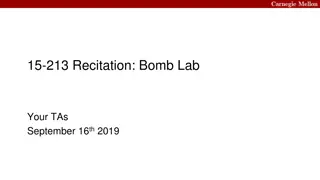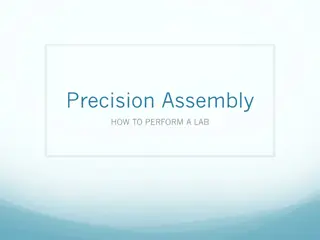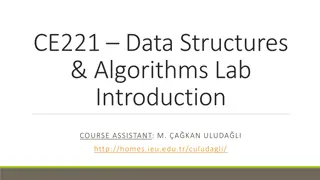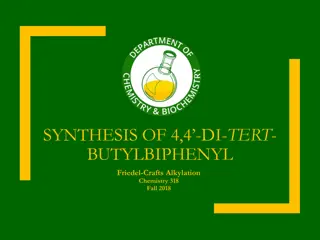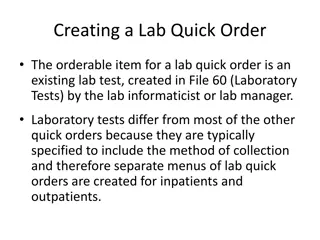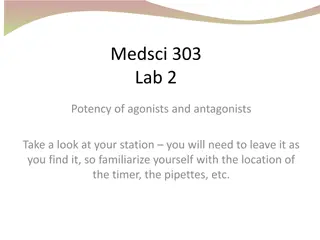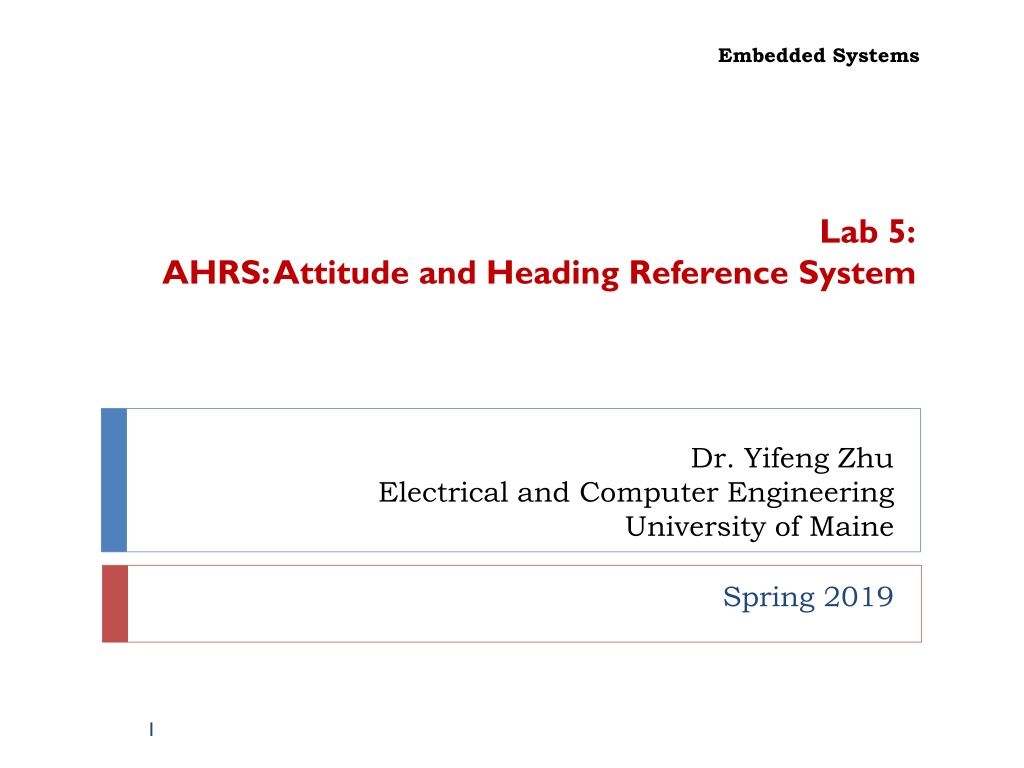
Understanding AHRS and Aircraft Orientation Systems
Explore how Attitude and Heading Reference Systems (AHRS) are utilized in ST Drones to estimate position and orientation. Learn about Aircraft Principal Axes, Euler Angles, and Tait-Bryan Rotation for representing orientation in aeronautical devices.
Download Presentation

Please find below an Image/Link to download the presentation.
The content on the website is provided AS IS for your information and personal use only. It may not be sold, licensed, or shared on other websites without obtaining consent from the author. If you encounter any issues during the download, it is possible that the publisher has removed the file from their server.
You are allowed to download the files provided on this website for personal or commercial use, subject to the condition that they are used lawfully. All files are the property of their respective owners.
The content on the website is provided AS IS for your information and personal use only. It may not be sold, licensed, or shared on other websites without obtaining consent from the author.
E N D
Presentation Transcript
Embedded Systems Lab 5: AHRS: Attitude and Heading Reference System Dr. Yifeng Zhu Electrical and Computer Engineering University of Maine Spring 2019 1
The ST Drones AHRS: An Attitude and Heading Reference System (AHRS) is used by the ST Drone to estimate its current position and orientation This information is used by the PID Controller alongside user input to determine the correct motor speeds for accurate flight control The sensors configured in the previous lab are used by the AHRS to produce position estimates 2
The ST Drones AHRS: Section 2, labelled in the below image, is the focus of this lab. This section takes sensor data from the drone as an input, and outputs an orientation in the form of the three aircraft principal axes. (Roll, Pitch, and Yaw) 3
Aircraft Principal Axes: The Aircraft Principal Axes, Roll, Pitch, and Yaw, are used to represent the orientation of various aeronautical devices. Yaw, a rotation about the Z-axis, is represented by Pitch, a rotation about the Y-axis, is represented by Roll, a rotation about the plane s axis, is represented by 4
Euler Angles: The Aircraft Principal Angles are actually a special type of Euler Angles known as Tait-Bryan Angles Euler Angles are a commonly used method of representing orientation, as they can do so cleanly using only 3 variables. The three variables in a set of Euler Angles represent the amount of rotation around three axes. The axes that are rotated about differ depending on the type of Euler Angles used. Tait-Bryan Angles are one example of this. 5
Tait-Bryan Rotation: As shown below, a Tait-Bryan orientation is reached through the following method. First, the axes rotate about the Z-axis by angle Next, the axes rotate about the current Y-axis by Finally, the axes rotate about the current X-axis by 6
Tait-Bryan Rotation: It can be seen, when comparing the previous two images, that the Aircraft Principal axes are indeed calculated using Tait-Bryan Angles 7
Quaternions: As you might have noticed in the original block diagram, before producing the output Euler Angles, the AHRS algorithm first produces a quaternion Quaternions are another method of representing an object s orientation in 3D space Quaternions are a 4D vector where the first value represents the size of the rotation, and the other three represent the axis to rotate about 8
Quaternions: The last three values are essentially a 3D vector representing the axis to rotate about, with each value corresponding to the X, Y, and Z axes, respectively The mathematical representation of the quaternion allows for calculations to be quickly and easily performed, making it a favorite for projects with real-time constraints More information on the mathematical representation of quaternions can be found in the lab handout 9
The AHRS Algorithm: The AHRS Algorithm produces output Euler Angles through the following method: The AHRS periodically samples data from the gyroscope and accelerometer The AHRS integrates the velocity and acceleration data, while accounting for error, to produce a position estimate in the form of quaternion The quaternion is converted to a set of Tait-Bryan angles and output to the PID Controller More information regarding the algorithm can also be found in the lab handout 10
The Lab: The goal of this lab is to demonstrate a basic understanding of the AHRS algorithm Code that performs the AHRS algorithm will be provided, and must be used to produce various outputs These outputs will be both verbally and graphically compared to determine accuracy 11









